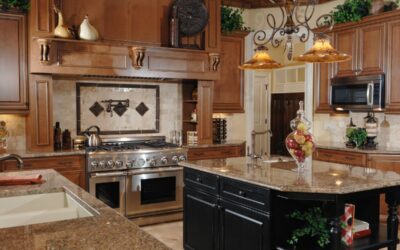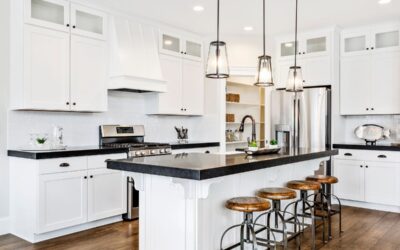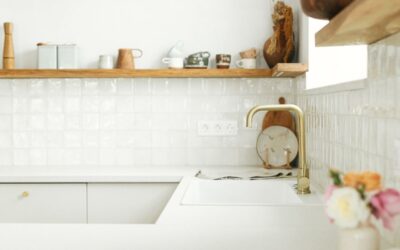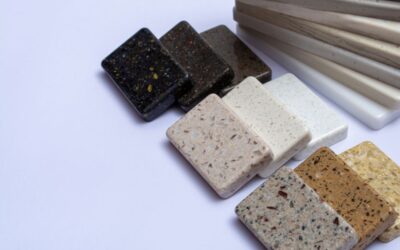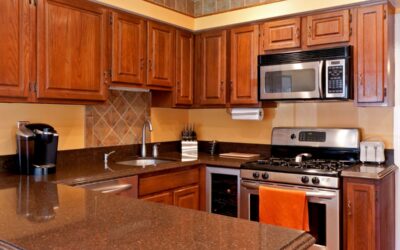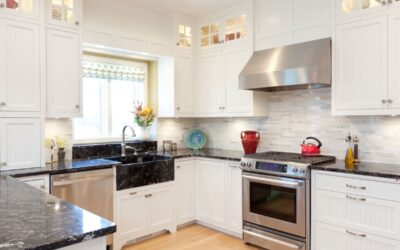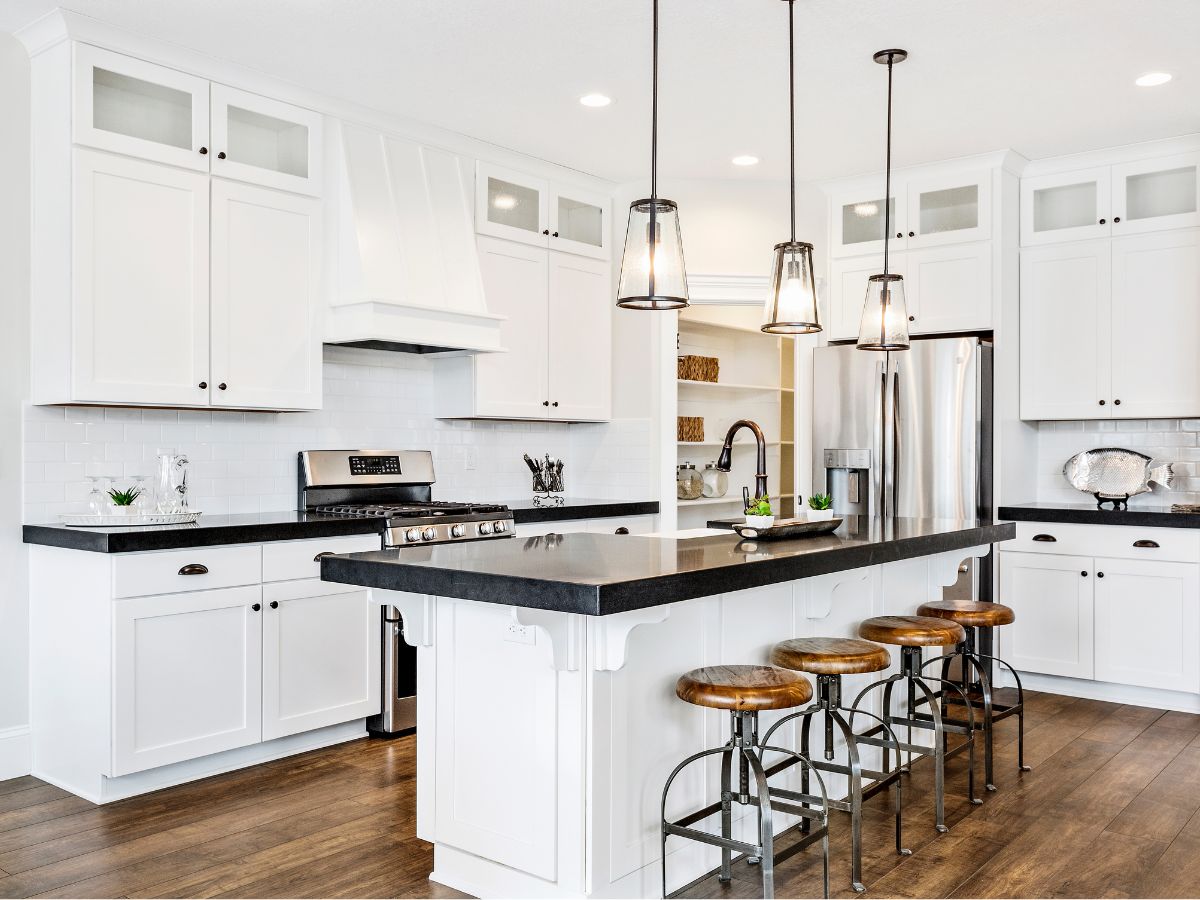can you put hot pans on granite?
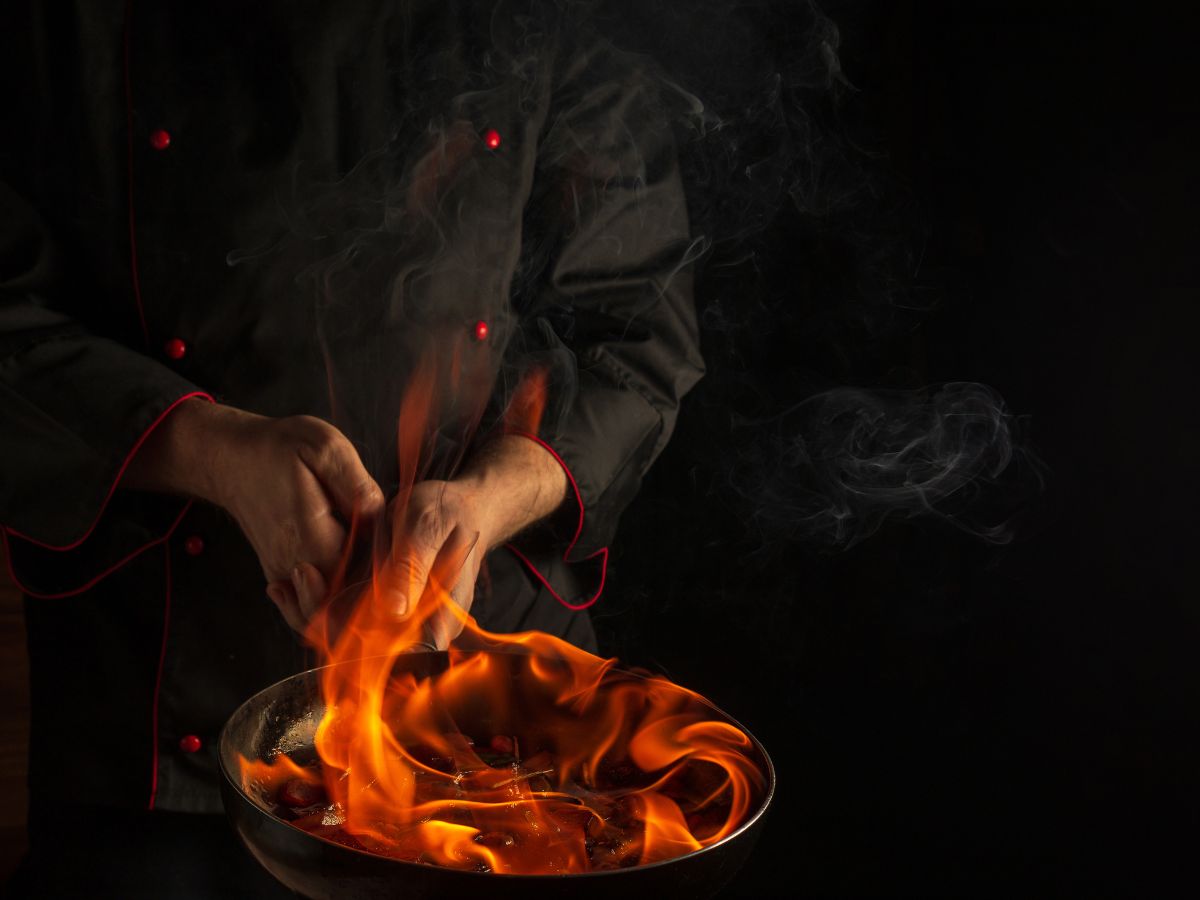
As an Amazon Associate, I earn from qualifying purchases
can you put hot pans on granite?
While granite ledges are known for their intensity obstruction, putting hot dishes straightforwardly on them isn’t suggested. Granite can endure high temperatures, and brief contact with a hot container is probably not going to cause long-haul harm. Notwithstanding, rehashed openness to high intensity can cause staining and possibly debilitate the seal on the ledge, making it more vulnerable to retaining spills and buildup
Besides, in the event that a hot pan is left on the stone, it can warm the surface, representing a consumption risk when the container is taken out. Hence, it’s prudent to utilize a trivet or potholder while putting a hot skillet on stone ledges.
Granite’s Heat Resistance
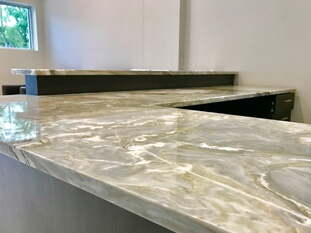
Granite is profoundly heat-safe because it develops from outrageous intensity and cooling processes. It can endure temperatures up to 1,200 degrees Fahrenheit (around 650 degrees Celsius) without harm. Its dissolving point lies somewhere in the range of 2,210 and 2,300 degrees Fahrenheit (1,210 to 1,260 degrees Celsius). In any case, while the actual stone can deal with high temperatures, the sealant applied to the surface may be less impervious to warm. Delayed openness to outrageous intensity might make harm the sealant, making the rock more defenseless to stains. It is fitting to utilize heat napkins or trivets to safeguard the ledge surface while putting hot pots or dishes on it.
Risks of Direct Heat Exposure
Therma Shock: Rehashed or delayed openness to intensity might prompt Therma shock, causing breaks in the stone. Therma shock happens when there is a fast change in temperature, which can cause pressure between the surface and inward layers of the material.
Damage to Sealant: While the actual granite can deal with high temperatures, the sealant applied to the surface may be less waterproof to warm. Delayed openness to outrageous intensity might harm the sealant, making the rock more powerless against stains.
Localized Damage: On the off chance that outrageous intensity is put on a similar region over and over, minor harm can happen. The rock will begin to become gentler, which frequently prompts little gouges.
Safety Risks: Assuming that you leave a hot pan on granite, it will warm the granite; then, at that point, when you eliminate the skillet, you have a hot granite surface that could consume you or another person.
Preventive Measures and Best Practices
Use Protective Coverings: Try to avoid putting hot pots and containers straightforwardly on the rock ledge. Use trivets, heat liners, or hot cushions to safeguard the surface.
Avoid Prolonged Heat Exposure: While rock can endure high temperatures, delayed openness to intensity can harm the sealant and possibly the actual stone.
Avoid Rapid Temperature Changes: Quick changes in temperature can prompt warm shock, which can cause breaks in the rock.
Regular Maintenance: Consistently reseal your stone ledges to keep up with their protection from intensity and stains
Security Measures: Know that stone can lead to heat, so that a hot pan can warm the granite surface. To stay away from consumers, don’t contact the region of the ledge where a hot container was put.
Restoration: Assuming that intensity harm happens, locally acquired reclamation fluids or glues can be utilized to fix the surface
Can you put hot pans on the granite backsplash?
While granite is known for its intensity obstruction, it is recommended to put a hot dish more slowly on a stone backsplash. The very rules that apply to stone ledges likewise apply to granite backsplashes. Stone can endure high temperatures; however, rehashed openness to high intensity can cause staining and possibly debilitate the seal on the rock, making it more vulnerable to engrossing spills and buildup.
Besides, in the event that a hot dish is left on the stone, it can warm the surface, representing a consumption risk when the skillet is eliminated. Hence, it’s prudent to utilize a trivet or potholder while putting hot dishes on stone backsplashes.
Comparing Granite to Other Countertop Materials
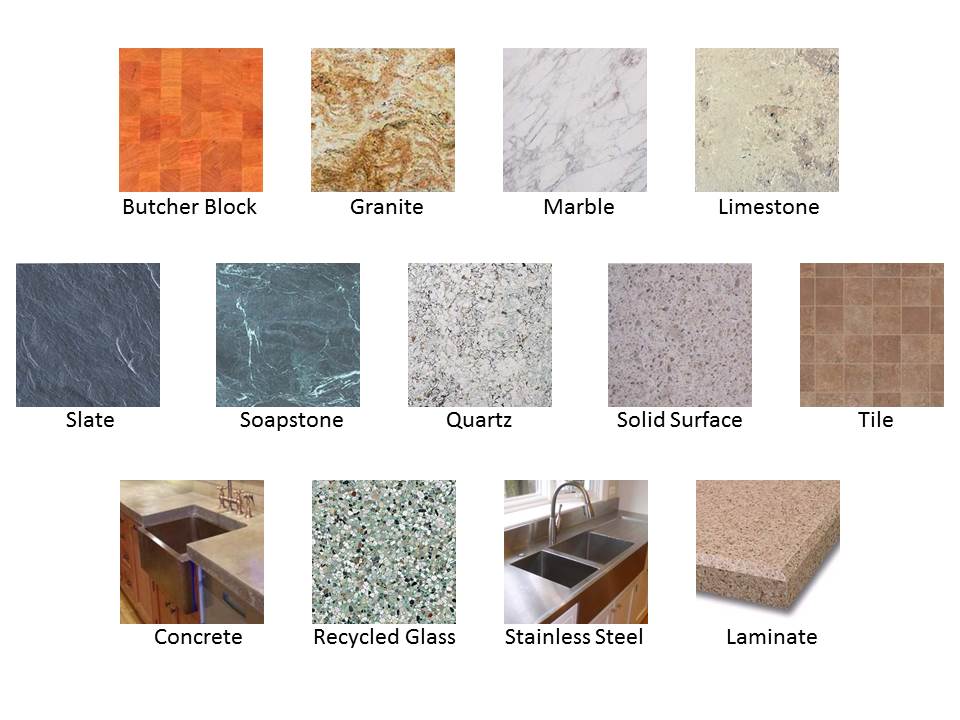
Granite
Granite is a characteristic stone that is solid, heat-safe and arrives in a great many tones. It is impervious to scratches, stains, and synthetic compounds, making it a well-known decision for kitchen ledges. In any case, granite is porous and requires fixing upon establishment and occasional resealing to forestall staining. Every chunk of granite is exceptional, offering a stand-out stylish
Quartz
Quartz ledges are designed from squashed quartzite and tars, making them non-permeable and more impervious to staining than stone. They are likewise more grounded than rock. Quartz ledges don’t need fixing, making them simpler to keep up with. Nonetheless, they are not as intensity-safe as rock, and the saps utilized in their creation can be harmed by rehashed openness to high intensity. Quartz ledges offer a more uniform appearance than stone, and they are accessible in many tones and examples.
Marble
Marble is a characteristic stone that offers a work of art and is exquisite and tasteful. In any case, it is more porous than rock and quartz, making it more powerless to staining and scratching. Like a rock, marble expects fixing to safeguard it from stains.
As far as cost, granite and quartz ledges are by and large tantamount, albeit the particular cost can shift contingent upon the specific chunk or plan. The two materials are sturdy and stand up well to ordinary use, yet they offer various benefits: stone is more intensity safe, while quartz offers better dampness and hole opposition.
Long-Term Care for Granite Countertops
Day-to-day Cleaning: Granite ledges ought to be cleaned day to day with a delicate dish cleanser and water. The delicate cleaning side of a wipe can be utilized to get more stubborn messes.
Avoid Harsh Chemicals: Grating cleaners or brutal synthetics can scratch, engrave, and pit the outer layer of the granite.
Fixing: Granite is porous, and that implies it can retain fluids while perhaps not appropriately fixed. It’s prescribed to seal stone ledges upon establishment and intermittently reseal them to forestall staining. The recurrence of resealing relies upon the kind of rock and how much utilization the ledge gets, yet a common guideline of thumb is one time per year.
Profound Cleaning: For a more profound clean, you can utilize a delicate cloth immersed with CH3)2CO. Apply the cloth to a segment of your rock and wipe over the whole area. This will slice through the grime rapidly.
Avoid Scratches and Heat Damage: In spite of the fact that stone is scratch and intensity safe, it’s ideal to utilize cutting sheets while utilizing blades and trivets or intensity cushions while putting hot pots and skillet on the ledge to forestall expected harm.
Types of hot pans
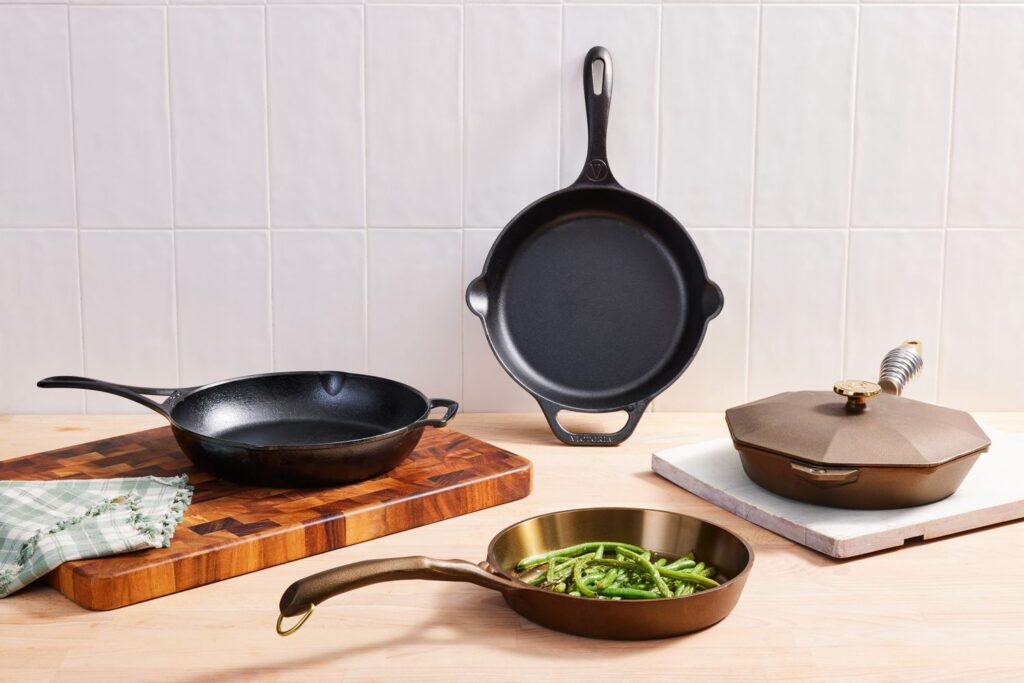
Fry Pans: These pans have a round shape and decently high, somewhat slanted sides, which are useful while throwing food varieties to cook them in the container equally. They are utilized for high-heat cooking strategies like sautéing, broiling, burning, and decreasing.
Sauté Pans: These pans include a wide, level base and high, vertical sides. The straight sides amplify the skillet’s cooking surface while permitting it to hold more fluid without its gamble pouring out over the sides.
Sauce Pans: These pans have tall sides and restricted bases that heat fluid fixings from all sides to advance decrease. They are the ideal decision for making various sorts of sauces.
Braziers or Rondeau Pans: These pans include a shallow level and wide cooking surface that is ideally suited for braising meats, vegetables, and vegetables
Grill Pans: These pans include a level, typically ribbed barbecuing surface and are fit for enduring high temperatures, particularly since they’re produced using cast iron
Stock Pots: These pots include a wide base ideal for searing and tall sides that lessen dissipation
Baking Pans: These containers are utilized for baking and come in different kinds, including a cake skillet that holds your player while it’s in the stove and shapes it into impeccably molded cakes
Can you put hot plates on quartz?
No, putting hot plates directly on quartz ledges isn’t proposed. While quartz is heat-safe, it isn’t heatproof. The tar in quartz can persevere up to 150 degrees Fahrenheit before it starts to consume, inflicting damage like faint checks or yellow stains.
Quartz edges are planned stone surfaces containing around 90% or more ground quartz held together with restricted amounts of confining experts like gum and polymer. These restricting experts are helpless to warm damage.
To safeguard your quartz edges from heat damage, it is urged that you use cautious mats, trivets, or potholders under hot utensils. This will help with staying aware of the appearance and life expectancy of your quartz edges.
What are the alternatives to granite countertops for cooking?
Marble: Marble is an exemplary choice that offers a top-of-the-line look. In any case, it’s less intense and open-minded than rock and can scratch or chip all the more without any problem.
Quartz and Designed Stone: These materials are a blend of quartz and tar, making areas of strength for a surface. They are low upkeep and don’t need fixing. However, they are somewhat milder than stone.
Wood: Wood ledges can give a warm, regular focus to your kitchen. They require customary upkeep with mineral oil to keep them looking great.
Tile: Tile ledges are a practical option in contrast to rock. They offer almost vast choices for variety and example, yet grout lines can be a test to keep clean.
Tempered Steel: Treated steel ledges are profoundly solid and intensity-safe. They are easy to perfect and offer a cutting-edge, modern look.
Concrete: Substantial ledges are adjustable and tough. They can be stained to imitate the appearance of normal stone. However, they require customary fixing to forestall staining and water harm.
Soapstone: Soapstone is a characteristic stone that is an intense and microscopic organism. A gentler material can scratch, yet these scratches can frequently be sanded out.
Strong Surface: Strong surface ledges are non-poisonous, low-VOC, and non-permeable. They are adjustable and simple to clean.
Slate: Slate is a sumptuous option in contrast to stone. It comes in dim tones and is a lovely choice. However, it’s at a somewhat more exorbitant cost point.
Myths vs. Facts
Myth: Production line-prepared cast iron needn’t bother with being prepared once more.
Fact: Production line-prepared skillets, in all actuality, should be prepared again over the long run. The manufacturing plant preparation is a decent beginning. However, it’s not as solid or non-stick as a very much kept-up-with-home flavoring.
Myth: You can’t utilize cleanser on cast iron.
Fact: This used to be valid when cleansers were made with lye, which could take the flavoring off the container. Current dish cleansers are gentle and won’t hurt a very prepared skillet.
Myth: The possibility that you want to warm up the skillet first and then, at that point, add the virus oil to keep food from staying is bogus.
Fact: This isn’t a fantasy. The science behind it is named the Leidenfrost Impact. However long the skillet is exceptionally hot, it doesn’t make any difference assuming that the oil is hot or room temperature.
Myth: Cast iron holds heat longer than cookware and depends on aluminum to spread heat.
Fact: This isn’t guaranteed to be valid. The intensity of maintenance of a skillet relies upon its material and thickness. While cast iron is known for its intense maintenance, the aluminum skillets can likewise hold heat well, assuming they are sufficiently thick.
Myth: An aluminum griddle discharges destructive substances and leaves a metallic persistent flavor in the dishes.
Fact: Just a skillet made totally of aluminum, without a covering, discharges unsafe substances and leaves a metallic delayed flavor impression in the dishes. An aluminum grill with a clay, non-stick, or other sort of covering is okay for wellbeing.
Myth: Broiling on a non-stick covering is hazardous to wellbeing.
Fact: All non-stick coatings contain PTFE (polytetrafluoroethylene). Nonetheless, unsafe substances can be delivered exclusively at temperatures over 240 °C (464 °F). Consequently, non-stick dishes are protected from use for however long they are not overheated.
Which countertop is most heat resistant?
The most intensity-safe ledges incorporate ceramic tile counters and hardened steel, which are basically impenetrable to hot cookware. Other intensity-safe materials incorporate stone, quartz, and soapstone. In any case, it’s critical to take note that while these materials are heat-safe, they are not really heatproof. Indeed, even with heat-safe ledges, it’s by and large prescribed to utilize trivets or different obstructions to keep likely harm from hot pots and pans
can you put hot pans on granite?
Read More :
- bathroom sink faucet parts diagram
- kitchens with taj mahal quartzite
- 20 kitchen tools and equipment
- is taj mahal quartzite outdated
As an Amazon Associate, I earn from qualifying purchases


